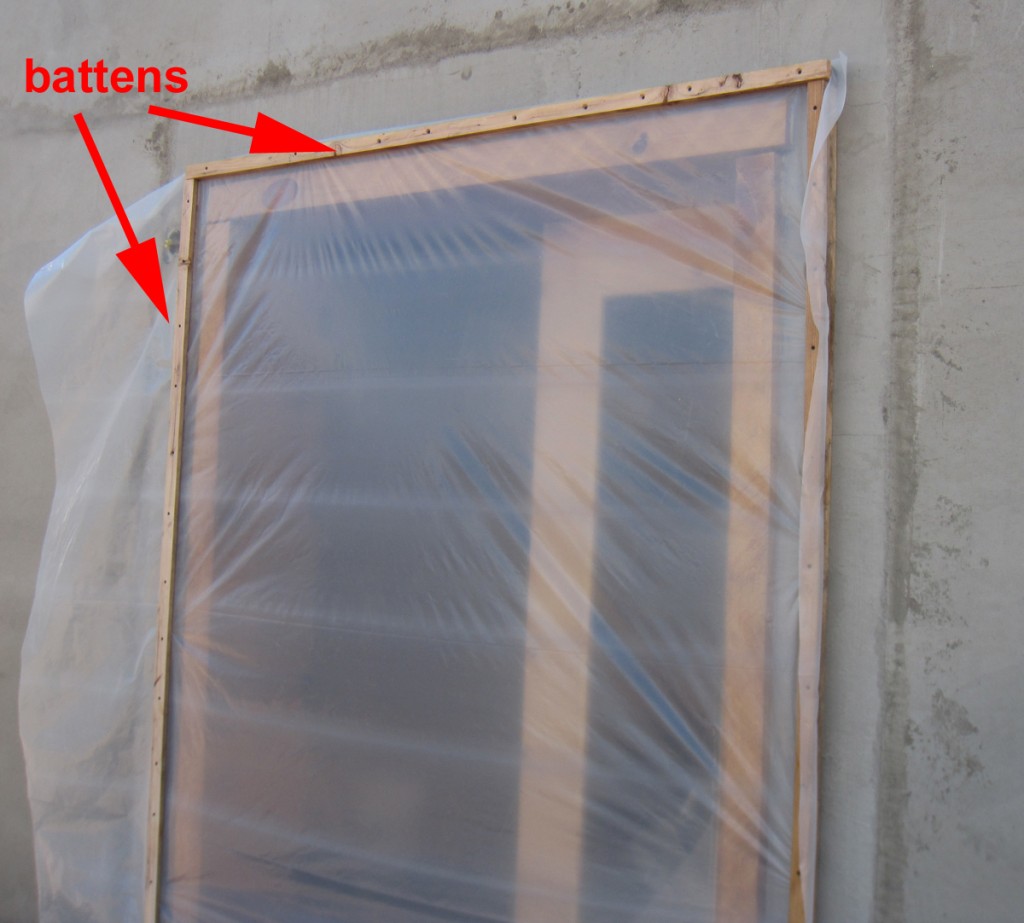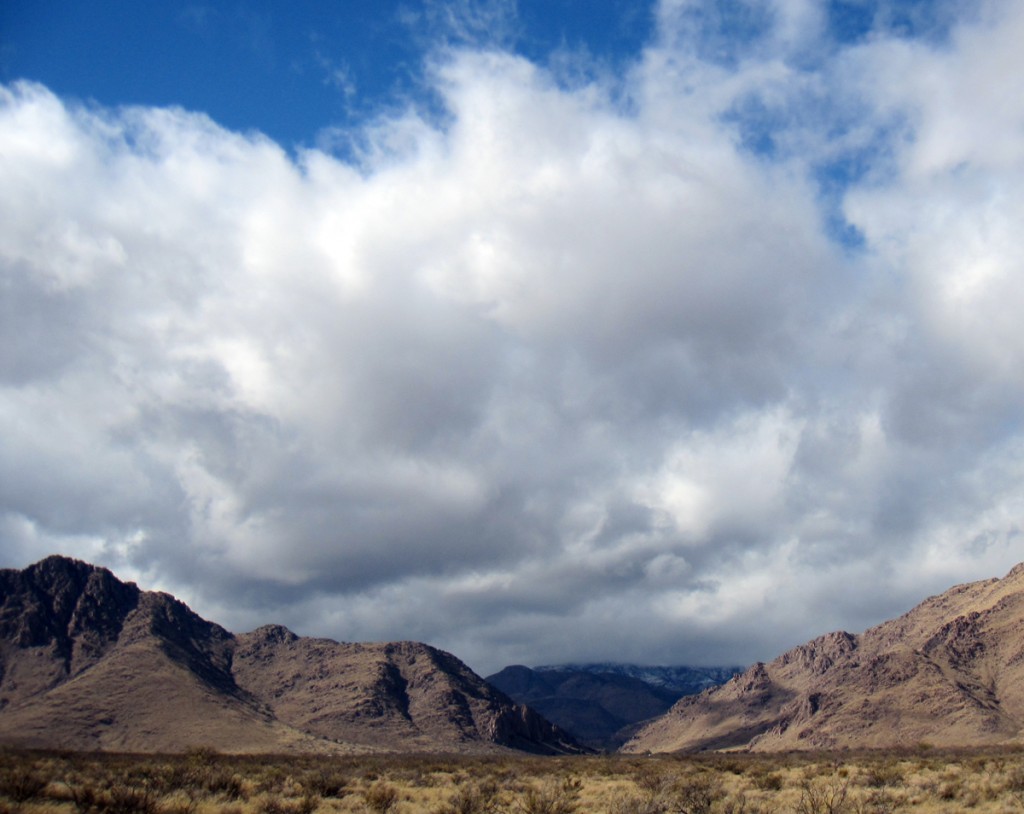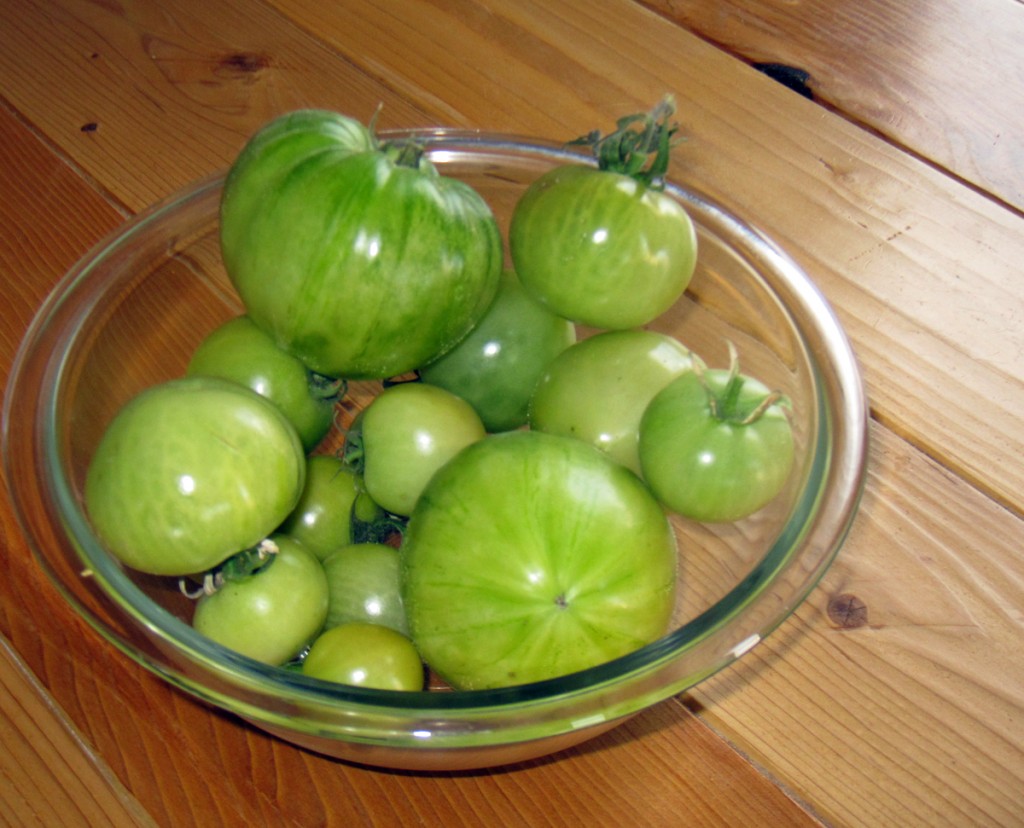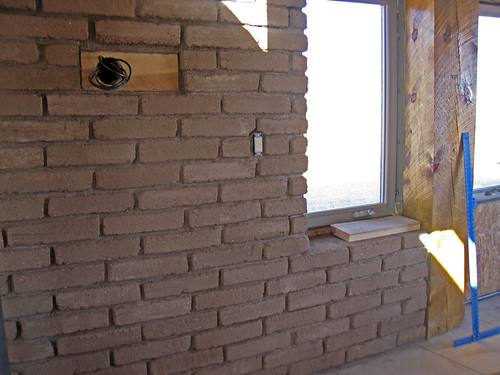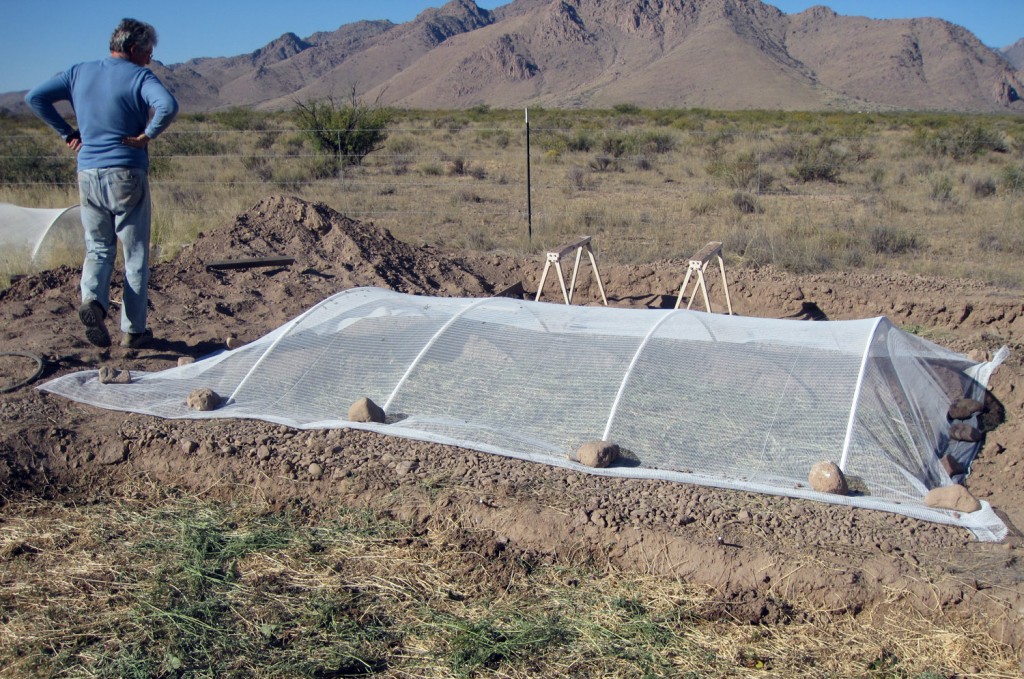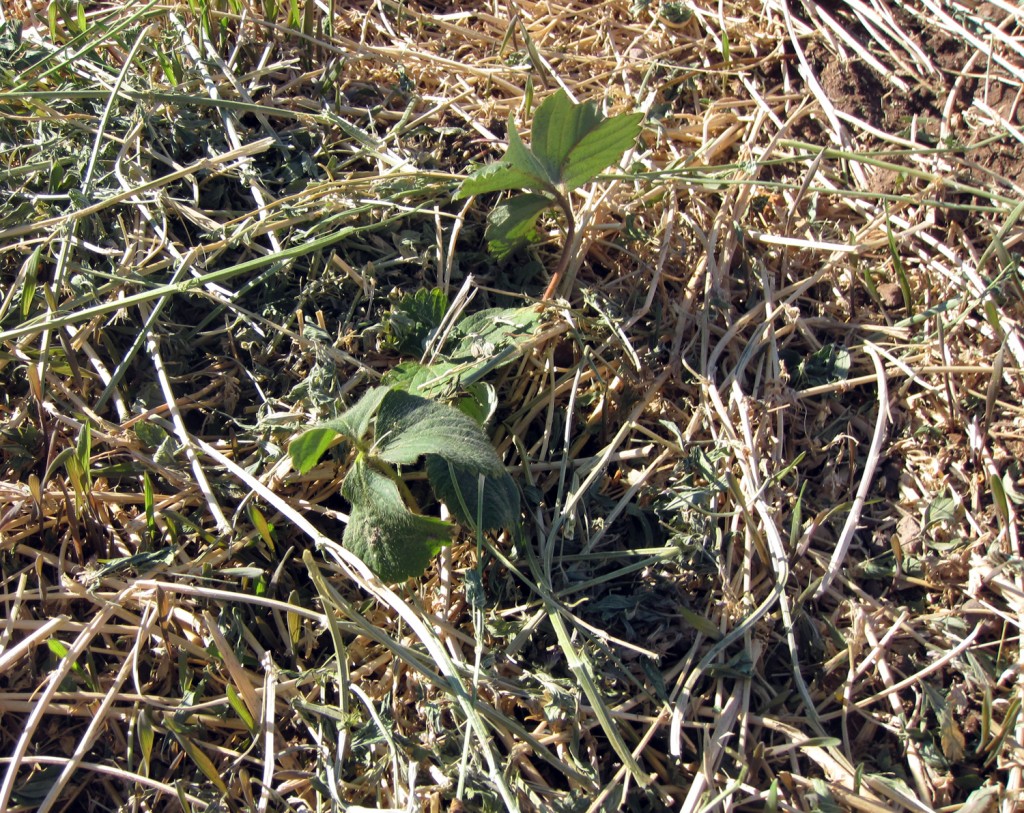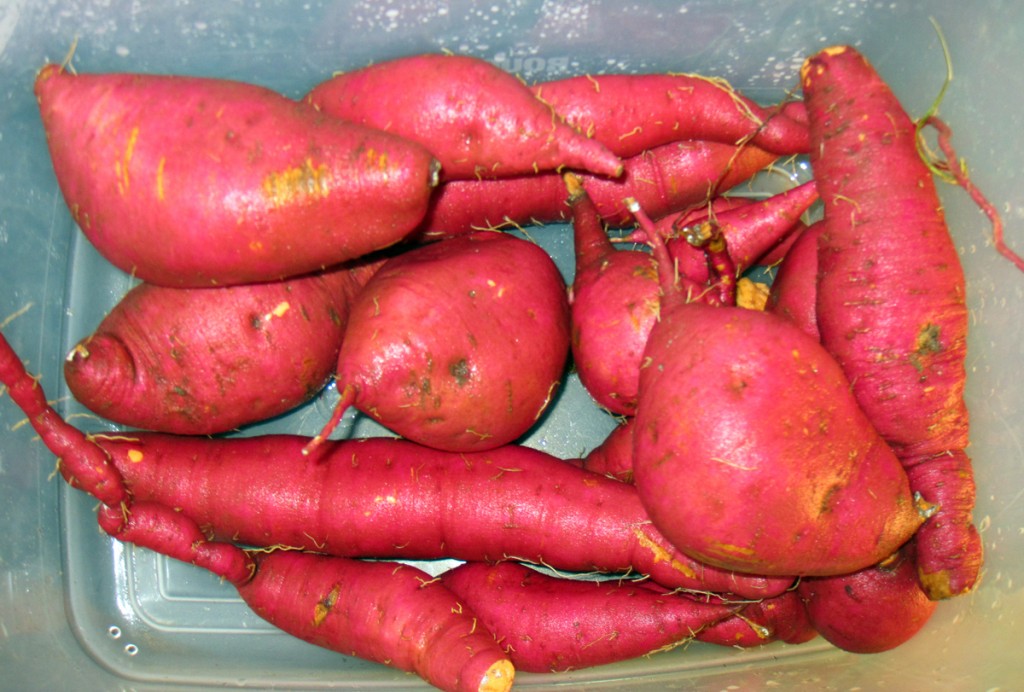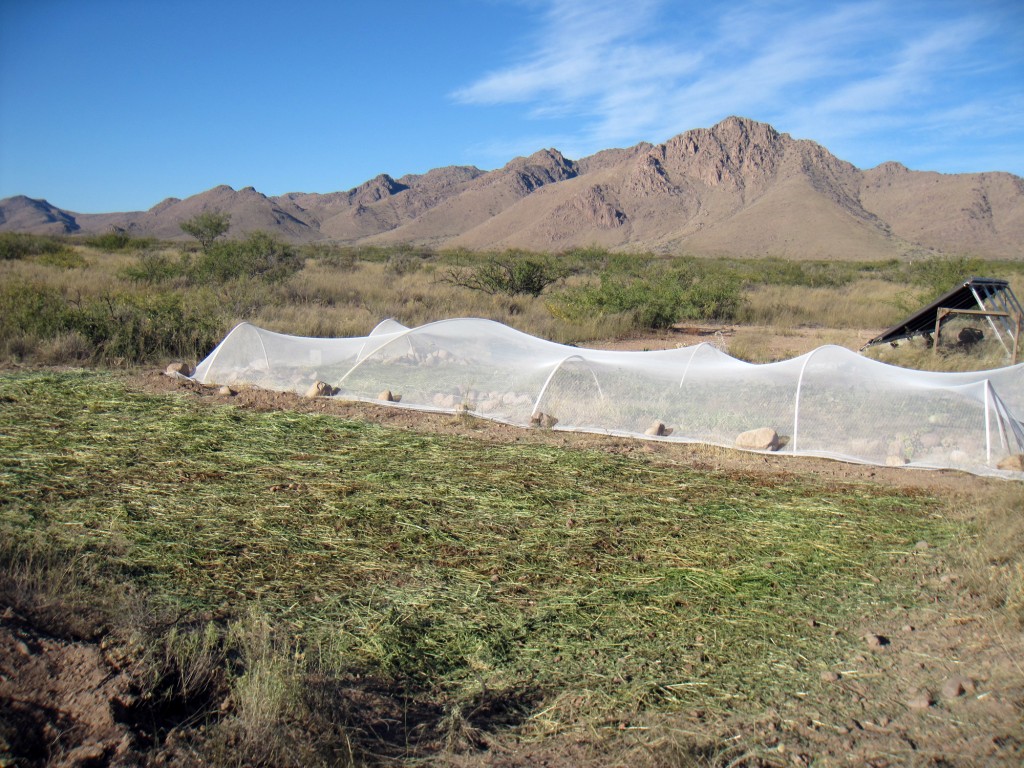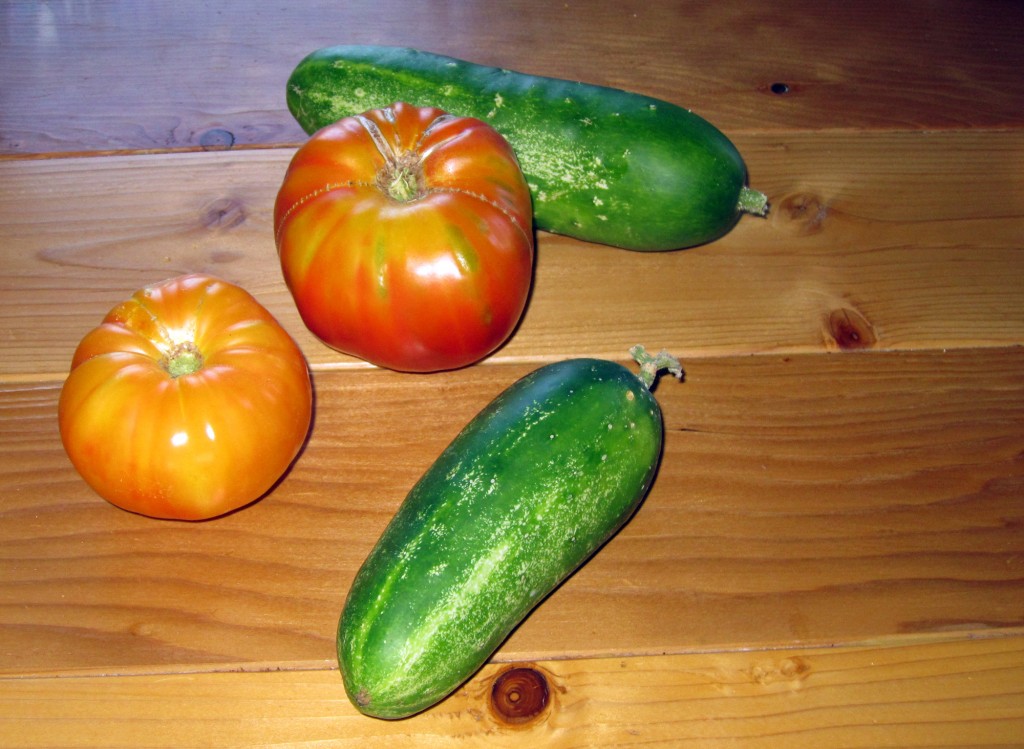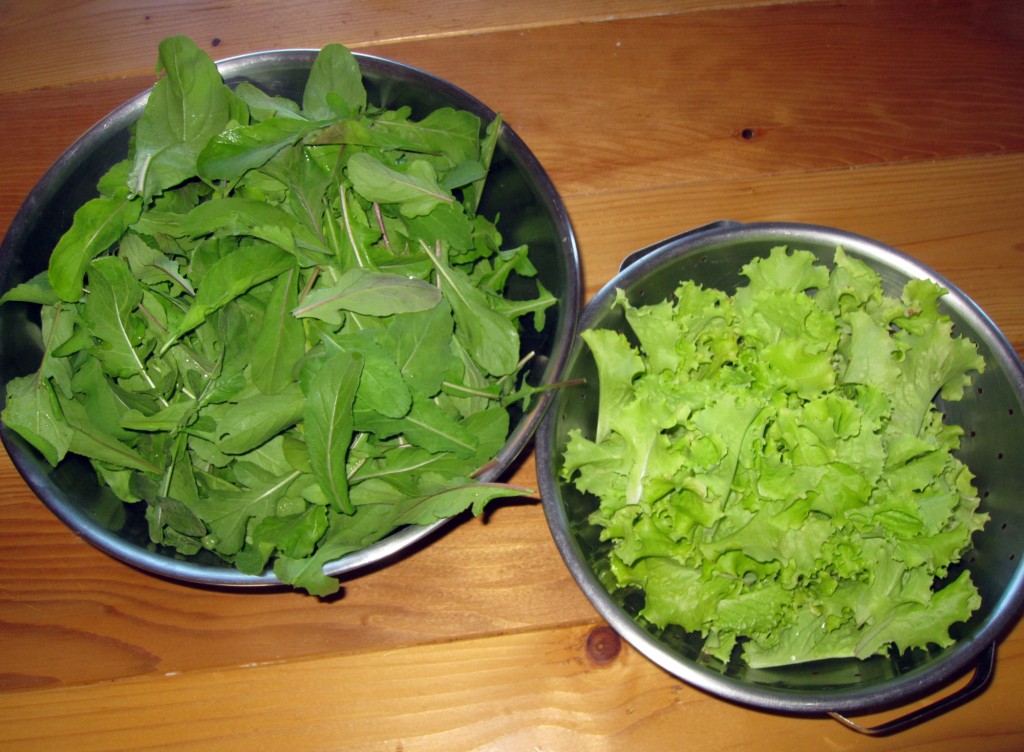This week, Brad and I had the opportunity to attend the 2012 Border Food Summit, a conference to explore sustainable agriculture in the southwest. The audience was a combination of growers, farmers market managers, policymakers, and community organizers.
We got there Sunday morning for an all-day, pre-conference tour of some local sustainable farms. We visited many interesting places, but the highlight for us was a trip to the farm from Native Seeds/SEARCH. This non-profit organization is involved in the important work of “conserving, distributing and documenting the adapted and diverse varieties of agricultural seeds” of the southwest. (For those of you not up on this, industrial agricultural practices have dramatically reduced the number of species of plants cultivated, resulting in a reduction in biodiversity that causes all kinds of other problems. Seed saving and growing diverse native crops combats this, and Native Seeds/SEARCH are pioneers in this area.)
The young people who work on this farm are amazing, and we learned all kinds of things about not only seed saving, but growing in general. More about this later.
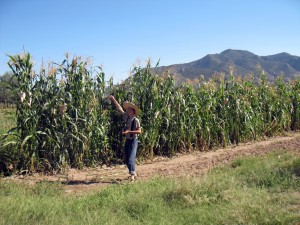
- Evan at the Native Seeds/SEARCH farm
All day Monday and Tuesday through noon, we attended a variety of sessions on topics that included food systems, growing, cooperatives, small farming concerns, community organizing, and social justice. It was very interesting and thought provoking. Here’s a short clip from Dr. Ricardo Salvador, who keynoted the conference.
The sessions at this conference had a lot of relevance for us, in terms of our own growing and food production and consumption, our work with the farmers market, and our larger interest and concerns with the global food system. At the end of the conference, we were asked to reflect on how we’d take what we learned and apply it personally and as a part of a community. Here’s what Brad and I are committed to doing.
What we can do as individuals:
- Put some small gabions on our land in the washes to create some new micro-climates and possibly make a place for a permaculture food forest in the future (This had come up at Heritage Days last year too.)
- Plant more mixed beds with crops growing among cover crops (We got some amazing tips on this at Native Seeds.)
- Save more seeds and start a local seed library here in Portal. (More to come on that.)
What we can do together:
- Emphasize the benefits of buying local, natural food at the Harvest Festival at the farmers market in Oct. This event will also include a seed exchange and seed saving education for kids.
- Begin some small local community networks here to advance these issues
After the conference, we returned to the Native Seeds farm. They had had a bunch of pumpkins available for a donation, and we decided to get a whole bunch of them to use in our Harvest Festival pumpkin decorating contest next month — supporting two good causes at once. We also got a giant bag of rye/vetch seed, a few other goodies, and some advice and encouragement. What nice people!

